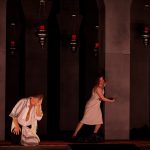Autor: Daniela Hanelová
Visually powerful images that will imprint on your memory for a long time. Dynamic bodies, raw emotions, and an exquisite sense of detail. These are the ingredients that distinguish the work of the film director Adi Halfin (ISR/GER). Her dance films Home Alone and Earth Odyssey became viral hits and received many awards, but the range of her artistic interest is much wider. Within the Dance On Screen Festival in Graz, where the workshop with Adi Halfin was also held, we had the unique opportunity to glimpse into the world of this inspiring artist, and learn something about the creative power of intuition, and about revealing the emotionality of the movement through the cinematic approach.
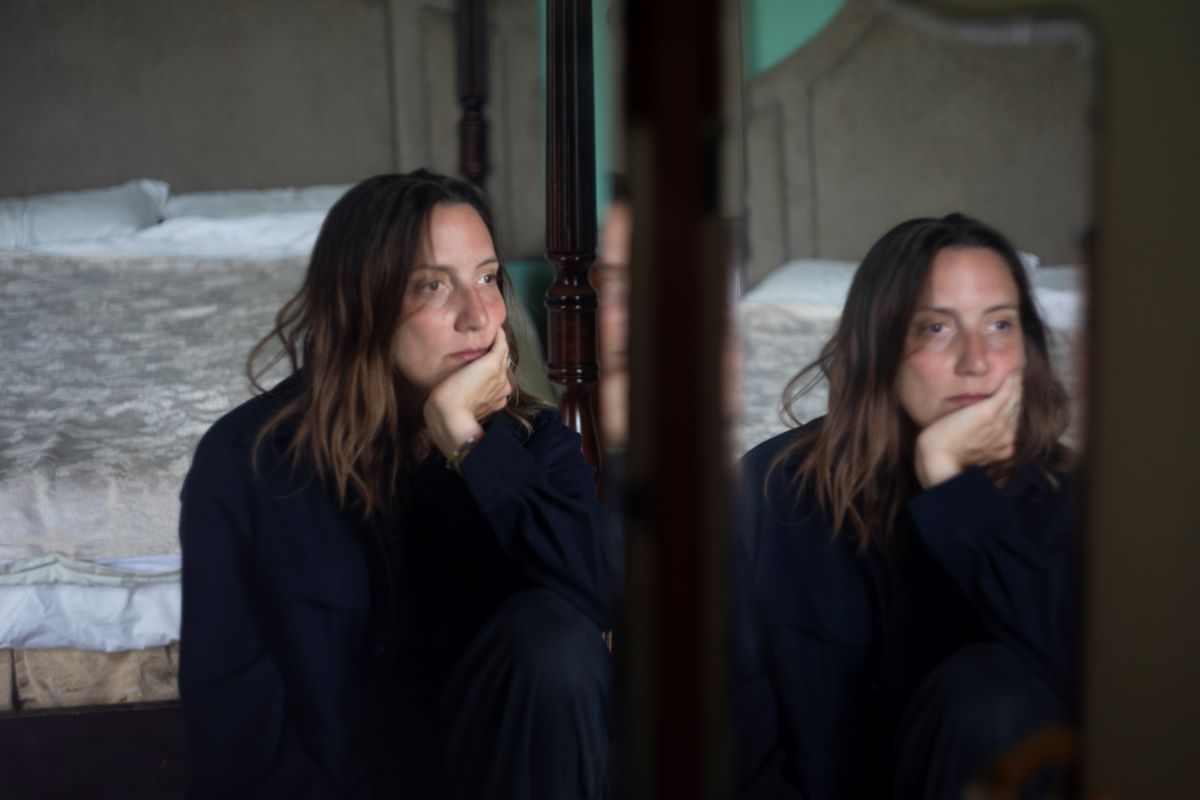
Could you tell us something about your journey of how you become a film director?
I think I was born an artist. I always drew, then later on painted and studied music, then I learnt photography and did some acting. Since I was attracted to so many forms of art, I thought that if I go to film school, it will combine all the things I love, and I wouldn’t have to choose between them. Little did I know that film is all about decision making, which I’m very bad at. When I got into film school, it was quite a shock for me. Suddenly I had to tell stories and justify everything I did. It was all about decision making. But I somehow managed to get through film school with three short films in my hand, and even get them screened in some big festivals.
When you created your first dance film Home Alone with the Batsheva Dance Company, you were already a highly experienced filmmaker. You worked in the film industry intensively for many years. Was there anything new that you learned about your work when you encountered dance or the genre of the dance film?
It was an eye-opening experience for me. First of all, I discovered dance as a new tool for filmmaking. Up until that moment, I worked either with actors, or musicians for music videos, or documenting real people. Coming from a very strict film background, it was suddenly a releasing experience to just explore and try things out. It opened me to this enjoyment, working with something that doesn´t have a script, doesn´t have text, and is very emotional, accessible, immediate and visceral, and not necessarily something that you can explain in words. It was telling a story, or showing an emotion in a different way than what I was used to. So, it opened me to a new way of thinking about how to make films.
The way we created Home Alone was to work not through an idea or a script but to work through a location. I said let´s find a home first, let´s go somewhere and see what this place is telling us. This was the first time I decided to do this, and I continued to base a script on the location also later, in some other projects.
I think that because I was already quite experienced when I set out to do Home Alone, I was confident enough to go to the set and not know exactly what was going to happen. Because in filmmaking, you need to know what you are doing: this is the scene, this is how we’re going to shoot it, these are the angles etc. We had some things planned, but I didn´t know what the movement was going to be like exactly. It was like going into an unknown, and it was so exciting. Also, setting out to do something without knowing exactly what will come out of it, is so much more thrilling and scary.
The leitmotif of your workshop Dancing with the Camera, was the relationship between intention and intuition – can you tell us something more about your approach?
I think every art project has to start with some kind of spark and you just go out and do it. If you are a painter, then you have a canvas and you can just try things out, if you are a choreographer or a dancer you go into the studio and you just try things out and this is the process of creation. In film, the process is the screenwriting. You write the script over and over again and you need to justify things. You need it to be structured: there is a character, a hero. What do they want? What is their conflict? How are they solving it? What is the struggle? If you don´t have these things, then the film is not working. It’s a classic convention of filmmaking – from E.T. to romantic comedies to war dramas. So, once you are done with the script writing and you start planning everything, you have to justify every single thing you do, especially when there is a budget – and there is so much money involved in filmmaking – so normally, you don´t get to just try things out and experiment. And by the time you get to actually shoot the film, you know so much and have everything meticulously planned.
I was very privileged to get to do dance films because suddenly, you dive into a new world. You still need to plan everything as well as you can – because it´s filmmaking, and you only have twelve hours to shoot per day, and every movement of the camera takes a long time. So, it´s very time–consuming. Filmmaking is not an immediate art form.
But when I direct dance, there’s much more exploration. Because dance is not a narrative form to begin with. There is something there, it can be an emotion, a movement, an impression, an experience, it doesn´t have to be a story, but the idea stays there, and you stick to this idea, which I call an intention.
I was an assistant director for many years, and I worked in planning the shoots, so I know how important scheduling is. As a director, you come to the set with all these very well–planned ideas, but above all that, you maintain an intention of what you want to do. Then on set, it’s important to have an intuition, and be open to change and to new things that can emerge when filming. Especially in dance films, and if you are not a dancer like myself, you cannot exactly imagine what it’s going to look like. Sure, you have rehearsals, you see the dance, and once the dance meets the camera, you can try to imagine it in a certain way (and there is so much you can imagine), but then, it will change. On set, you see new movements which you haven´t seen before. The idea is to be open to improvisation and to trying things out even though you have all this huge system mapped out and all these people around you who are there for this one single frame.
Can the intuition be some kind of language? Something that can get you close to the dancers who are used to working with different images? How do you find a common language with the dancers?
I don´t see any difference between working with dancers versus working with actors. I can´t say I have a method, but I use my own inner world, and my very limited terms in order to describe what I want to get from the dancers. When I am lucky enough to work with a choreographer, then, the choreographer will work on the movement and on the count. These are things I know nothing about. But in film, the terms I use are from an emotional world and a story world, from my personal experiences. I don’t have the dance tools that a choreographer has, so it’s always great to collaborate with choreographers and work from different places, aiming for the same result.
Everybody, even if we are not actors, reacts to stories. We all have certain experiences that we carry with us and these are the places that are similar in every art form. There is always an emotional place, where things derive from – whether it´s a question, a personal struggle, a history, a trauma, an inspiration – and as humans, we share these things, even if we speak different languages. And it’s the same emotional language I use when communicating with dancers.

Which personality has had the most significant influence on your artistic path?
The first name that comes to my mind, is David Lynch, because he´s such an interdisciplinary artist, and the way he thinks about film is so different. The film that really changed my life was Mulholland Drive. I saw it in the film theatre, and I came out and I asked myself What was that all about? I´ve watched it since over and over again (I don´t know how many times) and every single time I discover something new in this film, and this to me is true art – an art that changes with you, a creation that leaves its viewers room for exploration and interpretation.
Lynch speaks a lot about the idea as an essence. In his book Catching the Big Fish, he describes creation as fishing out the big ideas and sticking to them through the creative process. Because the process can be so frustrating sometimes and so challenging that just to maintain this thing that you set out to do, is one of the hardest things.
Lynch’s films are like puzzles. There’s a piece here and a piece there and somehow it connects, and it´s just so beautiful to see films that you can interpret in different ways. There are of course many films that I love but they tell one story. But films like Last Year in Marienbad and Mulholland Drive which deal with memory and different angles of storytelling – these films that are more intuitive and less structured – are the ones that struck me the most.
You worked a lot with current or former dancers from Batsheva Dance Company or L– E–V Company. Israeli contemporary dance scene is such a huge phenomenon in the dance world – there are many distinctive personalities, and the dancers are recognizable for their expression, and technical abilities. How it is for you as a film director to work with these dancers?
My first connection to the dance world was through Batsheva and the Gaga movement. I was very fortunate to work with these extremely beautiful, talented, and very unique people. The great thing about them is that they are excellent improvisers too. All the Batsheva dancers and the people who do Gaga on a continuous basis, have access to certain things that I can relate to. Gaga is a method that also a person like me, who is not a dancer can practice, so it’s accessible and understandable. I took some Gaga classes before filming Home Alone. It gave me access to these technical tools of creating movement.
I realized in the last few years, especially while living abroad, that Israel has a really condensed amount of talent in a very small space. The percentage of passionate and talented people is very high there in every single field. I think that because it´s such a small place and the budgets are tight and everybody is fighting for their territory in every aspect of life, that you have to find creative solutions. When you are limited in time or space, you need to find quick and creative solutions, and I think that the Israelis are good at this. I worked with different people from different countries – sometimes, it took them so much time to understand there is a problem, to address the fact that there is a problem, to think of the solution, to find the solution, and to execute it. While with Israelis it takes five minutes.
I live in Berlin, where everything is very laid back, there is so much space on one hand, but on the other, things more very slowly. Whereas in Israel, you go out on the street, you meet somebody, and things just happen. There is this general creative energy in the essence of Israel. I am almost crying saying this, because what´s happening there right now is too devastating. There is so much beauty, and so much beautiful energy there that they just killed it. I said it even before the current war but what happened there is absolutely shattering.
The feeling in Israel is that you never know what´s going to happen tomorrow, so you don´t have time and you need to find solutions now.
With the dancers, it´s probably similar in a way. There’s this energy, it´s hard for me to say what it is, but there is a lot of passion, and a lot of humour. Some people are cynical about certain things because so many crazy things are happening in Israel. So you have to lighten things up, whether with humour, dance, or creativity in general. All Israelis are traumatized one way or another, having this constant fear, and many people have anxieties. And art is a way of overcoming things.
Speaking about your dance films, when I watch them, there is so much power and freedom, the body seems to be not limited by anything, it can express itself from the deep of the soul. Is there something that you feel is not possible to transfer from the live dance to screen and you would like to? Are there any limitations in filmmaking that bother you?
I don´t think anything is impossible in life and that´s how I try to live my life. If I want to do something I will work hard and if I´ll work twenty years to get it, then I will. Every project has a different soul, a different intention, and different audience. I can´t define myself as a dance filmmaker. I direct promotional videos, music videos, and commercials or experimental films and documentaries. I never set out to direct a dance film to be screened in dance film festivals (maybe I will). Obviously, every project has its own limitations, but within these limitations, it´s also finding creative solutions.
Like we did with Lost Horse, for example, the music video by Asaf Avidan, which was a self–generated documentary of a couple filmed in their intimate space. (ed. dancers Bobbi Gene Smith and Or Schraiber) Or in Earth Odyssey, which was a project that was born from the limitations of COVID lockdown. The whole world was confined in their homes and this led to this project, directed remotely from my home in Berlin. If COVID had not happened, these two music videos would never have been created. So, it´s more about finding what you can do, rather than thinking about what you cannot do.
I think the main thing is not to get bored and just to find new exciting ways of expressing things that are important to me.
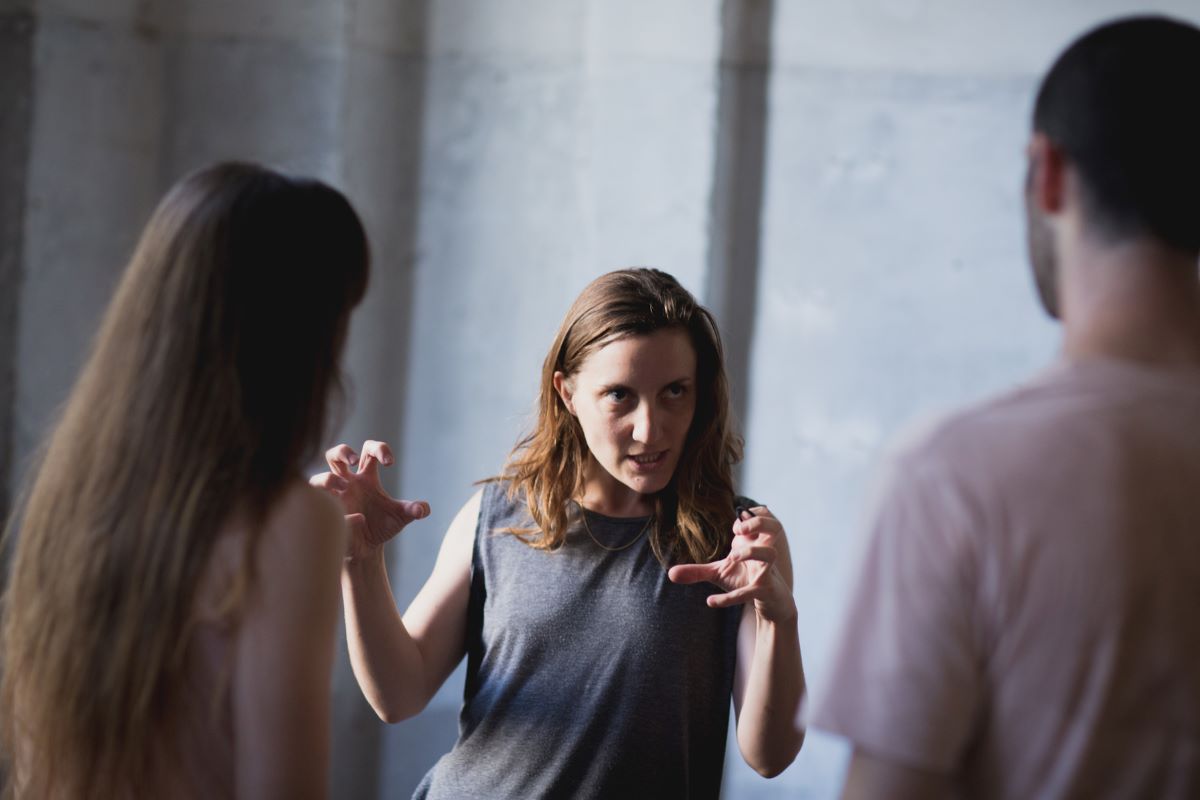
The music videos represent a significant part of your work. So far, you collaborated with Asaf Avidan, Kris Kelly, and others. Which of these collaborations do you remember particularly fondly?
Well, Earth Odyssey was a very special experience. It was the shortest project I had ever done. I think it took a week from the moment Asaf called me to when it came out. We wanted to release something very quickly as a reaction to the devastating situation the world was in. We wanted to put a smile on people’s faces, while everyone was confined in their homes during lockdown, uncertain of what the future would bring.
Bobbi (Jene Smith) and Or (Schraiber) brought together an amazing ensemble of dancers from all over the world – The US, Japan, The Netherlands, Israel, Germany – who were all stuck at home with rehearsals and performances cancelled and they all had some steam to let out. And so did I! The great thing about it is that these are such talented and busy dancers – I could never have gotten all of them to perform in one music video together. So here’s where the unfortunate circumstances became an advantage.
But the most amazing thing about this project were the reactions to it. We received so many messages from people around the world saying how this video made their day or put a smile on their faces or made them get up and dance. It was really heart-warming, and I felt it helped brighten people’s day.
What does the dancing body mean to you?
I think it´s a form of expression. We all are moving bodies. I look at the way my four–year–old daughter moves and reacts to things and it’s amazing. She watches a film and I see her physical reactions to what she sees – it´s so beautiful and real. The older you get, the less you move and the more limitations you put on your body. This is when diseases – both emotional and physical – appear. When I meet dancers, they have this openness and lightness, a bit like children. They have physical access to expressing emotion, they are constantly moving their bodies to express themselves and there’s so much beauty and genuineness in that. We all need to remind ourselves to move more.
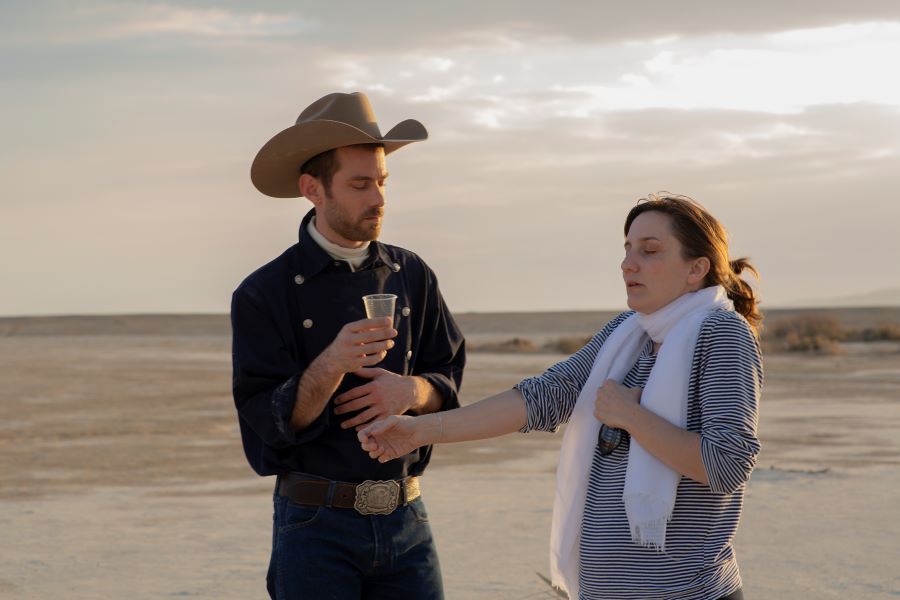
What theme are you about to process in your upcoming films? Is there something you have always wanted to do but haven´t had the chance yet?
I have a few projects I am currently working on – a mini-series, a short documentary and two music videos. There’s always something in my drawer. Many of the projects I am working on now have strong female characters. Some of them deal with motherhood under extreme circumstances.
But right now, I am very influenced by what is happening in Israel, and I feel I have to do something that has an impact that addresses the terrible war that´s going on there right now, with a hope it can create change. But right now, like many artists from the region, I feel paralysed, and I guess it’s part of processing the atrocity which seems to worsen by the day. I hope this nightmare will be over soon and we’ll finally have room for healing and for change.
And it’s obvious that women should lead that change.
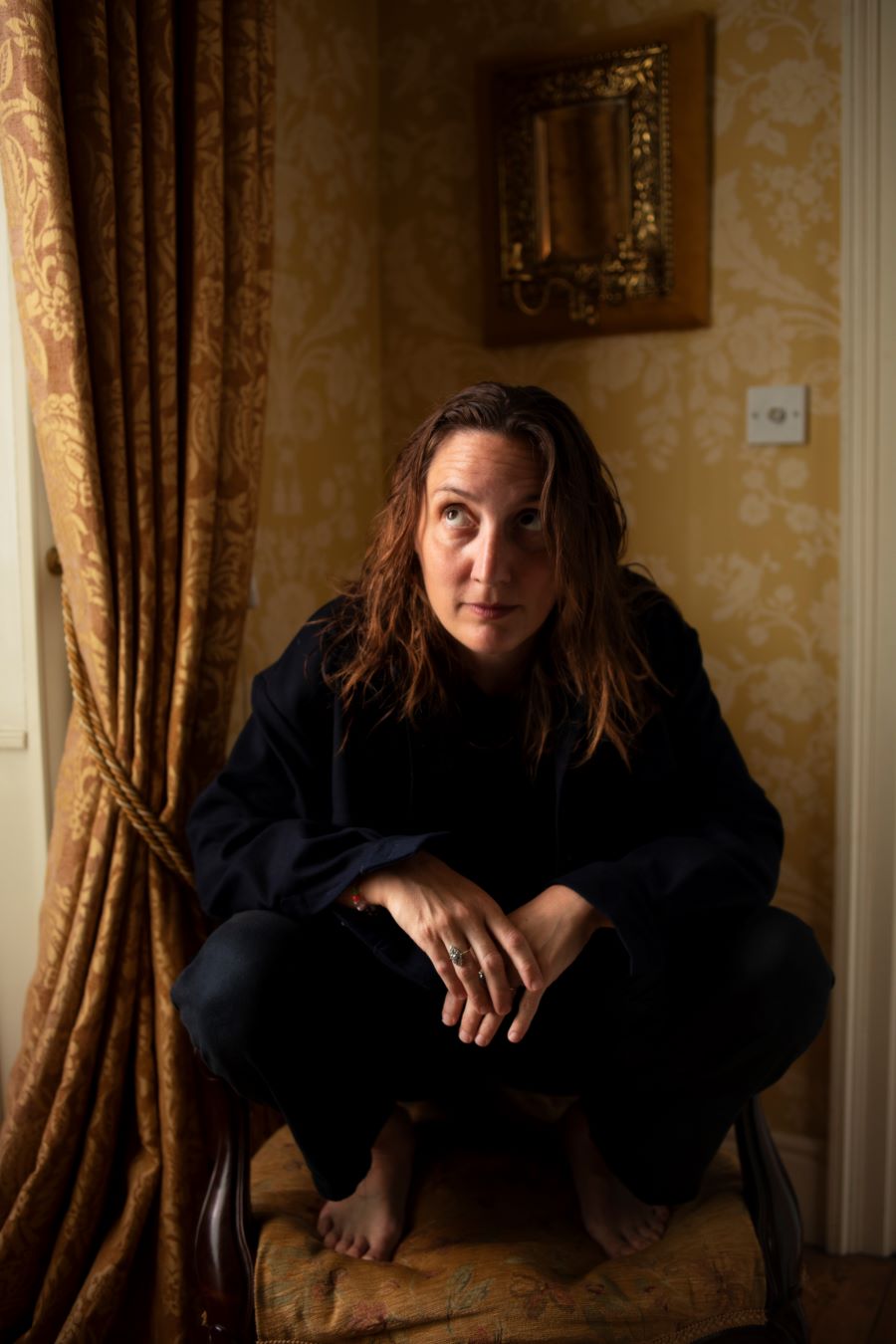
Adi Halfin is an award-winning director and screenwriter. She graduated from the Sam Spiegel Film School in Jerusalem with honours. Her three shorts have travelled the world in prestigious festivals such as Cannes and Berlinale and won numerous prizes worldwide. Adi has worked as a 1st assistant director in feature films, TV dramas, and commercials, where she gained vast experience in the art of filmmaking, assisting and learning from the best Israeli directors, such as Amos Gitai, Samuel Maoz, Rama Burshtein, and many more. Home Alone, which she directed for Batsheva Dance Company has won ten international prizes, including Best Commercial and Best Inspirational at the LA Film Awards, and Best Short at the San Francisco Dance Film Festival. Her interpretation of Radiohead´s True Love Waits, featuring world-renowned dancer and choreographer Bobbi Jene Smith, has won seven awards, including Best Unofficial Music Video at the Los Angeles Music Video Festival. Adi´s work for Toyota´s Impossible Stories offers an arresting portrayal of athlete Dergin Tokmak and was subsequently shortlisted at Cannes. In addition to directing, Adi teaches production and directing in film schools, and dance film workshops in Europe, the US, China, South America, and Israel.


